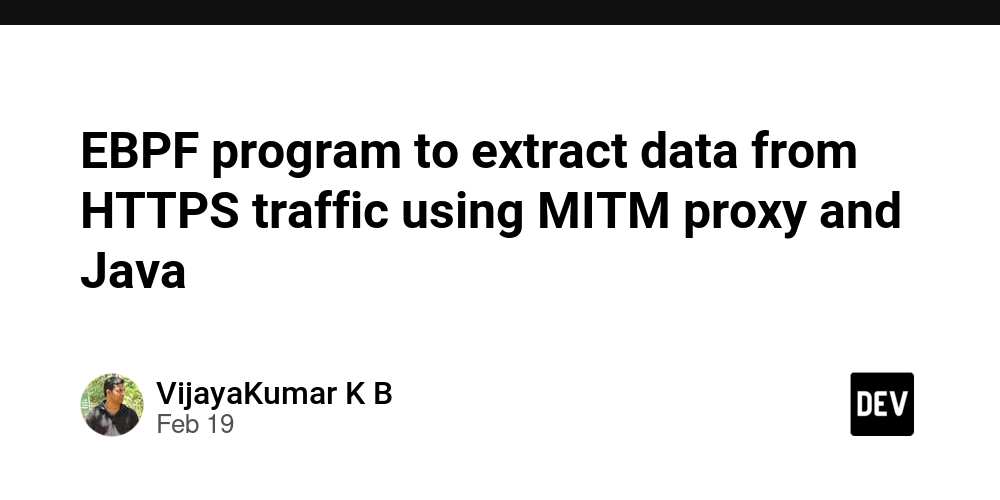5 TestContainers Strategies That Revolutionize Java Integration Testing
As a best-selling author, I invite you to explore my books on Amazon. Don't forget to follow me on Medium and show your support. Thank you! Your support means the world! Testing is a critical part of software development, especially when dealing with complex applications that interact with multiple systems. As developers, we often face challenges creating realistic test environments that accurately reflect production scenarios. This is where TestContainers shines as a powerful solution for Java-based applications. I've been using TestContainers in my projects for several years, and it's fundamentally changed how I approach integration testing. Let's explore this technology and five effective strategies that can elevate your testing approach. Understanding TestContainers TestContainers is a Java library that provides lightweight, disposable containers for databases, message brokers, web browsers, and other services during testing. It leverages Docker to create isolated environments that closely mimic production dependencies. The core concept is simple yet powerful: instead of mocking external dependencies or maintaining dedicated test servers, TestContainers dynamically creates containerized versions of these dependencies for each test execution. @Test void demoSimpleTestContainer() { try (GenericContainer redis = new GenericContainer("redis:6.2") .withExposedPorts(6379)) { redis.start(); // Now use the container for testing String address = redis.getHost(); Integer port = redis.getFirstMappedPort(); // Connect to Redis using the dynamically assigned address and port } } This approach offers several advantages over traditional testing methods: Tests run against real services, not mocks Environments are isolated and deterministic Test setup is defined as code, making it reproducible Containers are automatically cleaned up after tests Strategy 1: Creating Reproducible Test Environments One of the biggest challenges in testing is ensuring consistent environments across development machines and CI/CD pipelines. "Works on my machine" syndrome often stems from environmental differences. I've found that defining container configurations in code creates a reproducible setup regardless of where tests run. Here's how I implement this strategy: @Testcontainers class DatabaseIntegrationTest { @Container static PostgreSQLContainer postgres = new PostgreSQLContainer("postgres:14.5") .withDatabaseName("integration-tests-db") .withUsername("test") .withPassword("test") .withInitScript("init-schema.sql"); @DynamicPropertySource static void registerPgProperties(DynamicPropertyRegistry registry) { registry.add("spring.datasource.url", postgres::getJdbcUrl); registry.add("spring.datasource.username", postgres::getUsername); registry.add("spring.datasource.password", postgres::getPassword); } @Test void testDatabaseOperations() { // Your database integration test } } This approach ensures everyone on the team uses exactly the same database version, configuration, and initial state. By including an initialization script, we can pre-populate the database with test data. For more complex scenarios, I create custom container classes that encapsulate specific configurations: public class CustomPostgresContainer extends PostgreSQLContainer { private static final String IMAGE_VERSION = "postgres:14.5"; private static CustomPostgresContainer container; private CustomPostgresContainer() { super(IMAGE_VERSION); withDatabaseName("app-db") .withUsername("app-user") .withPassword("app-password") .withInitScript("init.sql") .withCommand("postgres -c fsync=off -c full_page_writes=off"); } public static synchronized CustomPostgresContainer getInstance() { if (container == null) { container = new CustomPostgresContainer(); } return container; } } This pattern lets me standardize container configuration across multiple test classes while making the intent clear. Strategy 2: Implementing Testing Composition Patterns Real-world applications rarely interact with just one external dependency. They often communicate with databases, message queues, caches, and other services. Testing these interactions accurately requires composing multiple containers. I've developed several patterns for composing test containers that simulate realistic service interactions: Network Composition When testing microservice communication, I create a shared network for containers: @Testcontainers class MicroserviceIntegrationTest { private static final Network network = Network.newNetwork(); @Container static PostgreSQLContainer postgres = new PostgreSQLContainer("postgres:14")

As a best-selling author, I invite you to explore my books on Amazon. Don't forget to follow me on Medium and show your support. Thank you! Your support means the world!
Testing is a critical part of software development, especially when dealing with complex applications that interact with multiple systems. As developers, we often face challenges creating realistic test environments that accurately reflect production scenarios. This is where TestContainers shines as a powerful solution for Java-based applications.
I've been using TestContainers in my projects for several years, and it's fundamentally changed how I approach integration testing. Let's explore this technology and five effective strategies that can elevate your testing approach.
Understanding TestContainers
TestContainers is a Java library that provides lightweight, disposable containers for databases, message brokers, web browsers, and other services during testing. It leverages Docker to create isolated environments that closely mimic production dependencies.
The core concept is simple yet powerful: instead of mocking external dependencies or maintaining dedicated test servers, TestContainers dynamically creates containerized versions of these dependencies for each test execution.
@Test
void demoSimpleTestContainer() {
try (GenericContainer redis = new GenericContainer<>("redis:6.2")
.withExposedPorts(6379)) {
redis.start();
// Now use the container for testing
String address = redis.getHost();
Integer port = redis.getFirstMappedPort();
// Connect to Redis using the dynamically assigned address and port
}
}
This approach offers several advantages over traditional testing methods:
- Tests run against real services, not mocks
- Environments are isolated and deterministic
- Test setup is defined as code, making it reproducible
- Containers are automatically cleaned up after tests
Strategy 1: Creating Reproducible Test Environments
One of the biggest challenges in testing is ensuring consistent environments across development machines and CI/CD pipelines. "Works on my machine" syndrome often stems from environmental differences.
I've found that defining container configurations in code creates a reproducible setup regardless of where tests run. Here's how I implement this strategy:
@Testcontainers
class DatabaseIntegrationTest {
@Container
static PostgreSQLContainer postgres = new PostgreSQLContainer<>("postgres:14.5")
.withDatabaseName("integration-tests-db")
.withUsername("test")
.withPassword("test")
.withInitScript("init-schema.sql");
@DynamicPropertySource
static void registerPgProperties(DynamicPropertyRegistry registry) {
registry.add("spring.datasource.url", postgres::getJdbcUrl);
registry.add("spring.datasource.username", postgres::getUsername);
registry.add("spring.datasource.password", postgres::getPassword);
}
@Test
void testDatabaseOperations() {
// Your database integration test
}
}
This approach ensures everyone on the team uses exactly the same database version, configuration, and initial state. By including an initialization script, we can pre-populate the database with test data.
For more complex scenarios, I create custom container classes that encapsulate specific configurations:
public class CustomPostgresContainer extends PostgreSQLContainer<CustomPostgresContainer> {
private static final String IMAGE_VERSION = "postgres:14.5";
private static CustomPostgresContainer container;
private CustomPostgresContainer() {
super(IMAGE_VERSION);
withDatabaseName("app-db")
.withUsername("app-user")
.withPassword("app-password")
.withInitScript("init.sql")
.withCommand("postgres -c fsync=off -c full_page_writes=off");
}
public static synchronized CustomPostgresContainer getInstance() {
if (container == null) {
container = new CustomPostgresContainer();
}
return container;
}
}
This pattern lets me standardize container configuration across multiple test classes while making the intent clear.
Strategy 2: Implementing Testing Composition Patterns
Real-world applications rarely interact with just one external dependency. They often communicate with databases, message queues, caches, and other services. Testing these interactions accurately requires composing multiple containers.
I've developed several patterns for composing test containers that simulate realistic service interactions:
Network Composition
When testing microservice communication, I create a shared network for containers:
@Testcontainers
class MicroserviceIntegrationTest {
private static final Network network = Network.newNetwork();
@Container
static PostgreSQLContainer postgres = new PostgreSQLContainer<>("postgres:14")
.withNetwork(network)
.withNetworkAliases("postgres");
@Container
static GenericContainer redis = new GenericContainer<>("redis:6.2")
.withNetwork(network)
.withNetworkAliases("redis");
@Container
static GenericContainer serviceA = new GenericContainer<>("my-service-a:latest")
.withNetwork(network)
.withNetworkAliases("service-a")
.withEnv("DB_HOST", "postgres")
.withEnv("REDIS_HOST", "redis");
@Test
void testCrossServiceCommunication() {
// Test interactions between services
}
}
This setup allows containers to communicate using their network aliases, just as they would in a production environment.
Service Composition
For testing how your application interacts with multiple services, I use a composition approach:
@Testcontainers
class OrderProcessingIntegrationTest {
@Container
static PostgreSQLContainer database = new PostgreSQLContainer<>("postgres:14");
@Container
static RabbitMQContainer rabbitMq = new RabbitMQContainer("rabbitmq:3.9-management")
.withExchange("orders", "direct")
.withQueue("order-processing")
.withBinding("orders", "order-processing");
@Container
static RedisContainer redis = new RedisContainer("redis:6.2");
@BeforeEach
void setup() {
orderService = new OrderService(
new JdbcOrderRepository(database.getJdbcUrl(), database.getUsername(), database.getPassword()),
new RabbitMqEventPublisher(rabbitMq.getAmqpUrl()),
new RedisOrderCache(redis.getHost(), redis.getFirstMappedPort())
);
}
@Test
void whenOrderCreated_thenNotificationSentAndCacheUpdated() {
// Test the entire order flow across all services
}
}
This pattern allows me to test complex interactions between multiple services, ensuring that all components work together correctly.
Strategy 3: Leveraging Specialized Modules
TestContainers provides purpose-built modules for popular services that offer optimized configurations and convenience methods for testing specific technologies. Using these specialized modules has saved me countless hours of configuration.
Database Modules
For database testing, specialized containers like PostgreSQLContainer, MySQLContainer, or MongoDBContainer provide JDBC URL generation and other database-specific features:
@Testcontainers
class JpaRepositoryTest {
@Container
static PostgreSQLContainer postgres = new PostgreSQLContainer<>("postgres:14")
.withDatabaseName("test")
.withUsername("test")
.withPassword("test");
@Autowired
private CustomerRepository customerRepository;
@Test
void testFindByEmail() {
Customer saved = customerRepository.save(new Customer("test@example.com", "Test User"));
Optional<Customer> found = customerRepository.findByEmail("test@example.com");
assertTrue(found.isPresent());
assertEquals("Test User", found.get().getName());
}
}
Message Broker Modules
For testing applications that use message brokers, dedicated containers for RabbitMQ, Kafka, and other messaging systems provide specialized configuration:
@Testcontainers
class MessageProcessorTest {
@Container
static KafkaContainer kafka = new KafkaContainer(DockerImageName.parse("confluentinc/cp-kafka:7.0.0"));
private KafkaConsumer<String, String> consumer;
private KafkaProducer<String, String> producer;
@BeforeEach
void setup() {
// Configure Kafka clients with the dynamic broker address
Map<String, Object> consumerProps = new HashMap<>();
consumerProps.put(ConsumerConfig.BOOTSTRAP_SERVERS_CONFIG, kafka.getBootstrapServers());
consumerProps.put(ConsumerConfig.GROUP_ID_CONFIG, "test-group");
consumerProps.put(ConsumerConfig.AUTO_OFFSET_RESET_CONFIG, "earliest");
consumerProps.put(ConsumerConfig.KEY_DESERIALIZER_CLASS_CONFIG, StringDeserializer.class.getName());
consumerProps.put(ConsumerConfig.VALUE_DESERIALIZER_CLASS_CONFIG, StringDeserializer.class.getName());
Map<String, Object> producerProps = new HashMap<>();
producerProps.put(ProducerConfig.BOOTSTRAP_SERVERS_CONFIG, kafka.getBootstrapServers());
producerProps.put(ProducerConfig.KEY_SERIALIZER_CLASS_CONFIG, StringSerializer.class.getName());
producerProps.put(ProducerConfig.VALUE_SERIALIZER_CLASS_CONFIG, StringSerializer.class.getName());
consumer = new KafkaConsumer<>(consumerProps);
producer = new KafkaProducer<>(producerProps);
}
@Test
void testMessageProcessing() {
String topic = "test-topic";
consumer.subscribe(Collections.singletonList(topic));
// Produce a message
producer.send(new ProducerRecord<>(topic, "key", "value"));
// Consume and verify
ConsumerRecords<String, String> records = consumer.poll(Duration.ofSeconds(10));
assertEquals(1, records.count());
assertEquals("value", records.iterator().next().value());
}
}
Web Testing Modules
For testing web applications, TestContainers provides modules for browsers and HTTP servers:
@Testcontainers
class WebAppTest {
@Container
static BrowserWebDriverContainer chrome = new BrowserWebDriverContainer<>()
.withCapabilities(new ChromeOptions());
@Container
static GenericContainer app = new GenericContainer<>("my-web-app:latest")
.withExposedPorts(8080);
@Test
void testLogin() {
WebDriver driver = chrome.getWebDriver();
driver.get("http://" + app.getHost() + ":" + app.getFirstMappedPort() + "/login");
driver.findElement(By.id("username")).sendKeys("admin");
driver.findElement(By.id("password")).sendKeys("password");
driver.findElement(By.id("login-button")).click();
WebElement welcomeMessage = driver.findElement(By.id("welcome-message"));
assertEquals("Welcome, admin!", welcomeMessage.getText());
}
}
These specialized modules abstract away the complexity of configuring specific services for testing, allowing me to focus on the actual test logic.
Strategy 4: Adopting Parallel Test Execution Strategies
As test suites grow, execution time can become a bottleneck. TestContainers allows for several approaches to optimize test execution time without sacrificing coverage.
Container Reuse
One strategy I've implemented is container reuse across multiple test classes:
public class DatabaseContainer {
public static PostgreSQLContainer postgres = new PostgreSQLContainer<>("postgres:14")
.withDatabaseName("test")
.withUsername("test")
.withPassword("test");
static {
postgres.start();
// Make sure the container is stopped when JVM exits
Runtime.getRuntime().addShutdownHook(new Thread(postgres::stop));
}
}
class FirstRepositoryTest {
// No @Container annotation, using the shared instance
static PostgreSQLContainer postgres = DatabaseContainer.postgres;
// Tests using the shared container
}
class SecondRepositoryTest {
// Using the same shared container instance
static PostgreSQLContainer postgres = DatabaseContainer.postgres;
// More tests using the shared container
}
This approach starts the container once for all test classes, significantly reducing total test execution time.
Ryuk Disabling for CI Environments
In CI environments where cleanup is less critical, I sometimes disable the Ryuk container that TestContainers uses for cleanup:
@BeforeAll
static void beforeAll() {
// Only disable in CI environment
if (System.getenv("CI") != null) {
System.setProperty("testcontainers.ryuk.disabled", "true");
}
}
This can further improve test execution time in environments where containers are disposed of after the build anyway.
Test Class Parallelization
Modern test frameworks support parallel execution of test classes. I configure my build tool to run tests in parallel and ensure my container usage patterns support this:
When using this approach, I ensure that test classes are independent and don't interfere with each other's containers.
Strategy 5: Building Advanced Testing Scenarios
The real power of TestContainers emerges when tackling complex testing scenarios that would be difficult or impossible with traditional approaches.
Data Migration Testing
I've used TestContainers to test database migration scripts by creating containers with different database versions:
@Testcontainers
class MigrationTest {
@Container
static PostgreSQLContainer oldVersionDb = new PostgreSQLContainer<>("postgres:12")
.withDatabaseName("migration-test")
.withUsername("test")
.withPassword("test")
.withInitScript("init-old-schema.sql");
@Test
void testMigrationFromOldToNewSchema() {
// 1. Connect to old version and insert test data
try (Connection conn = DriverManager.getConnection(
oldVersionDb.getJdbcUrl(),
oldVersionDb.getUsername(),
oldVersionDb.getPassword())) {
// Insert test data in old schema format
try (PreparedStatement ps = conn.prepareStatement(
"INSERT INTO customers (name, email) VALUES (?, ?)")) {
ps.setString(1, "Test User");
ps.setString(2, "test@example.com");
ps.executeUpdate();
}
// 2. Run migration script
try (Statement stmt = conn.createStatement()) {
stmt.execute(Files.readString(Path.of("src/main/resources/db/migration/V2__add_customer_type.sql")));
}
// 3. Verify migration was successful
try (Statement stmt = conn.createStatement();
ResultSet rs = stmt.executeQuery("SELECT name, email, customer_type FROM customers")) {
assertTrue(rs.next());
assertEquals("Test User", rs.getString("name"));
assertEquals("test@example.com", rs.getString("email"));
assertEquals("REGULAR", rs.getString("customer_type"));
}
}
}
}
This approach allows me to verify that database migrations work correctly without risking production data.
Fault Tolerance Testing
TestContainers enables realistic chaos testing by simulating network issues or service outages:
@Testcontainers
class FaultToleranceTest {
@Container
static PostgreSQLContainer postgres = new PostgreSQLContainer<>("postgres:14")
.withDatabaseName("test")
.withUsername("test")
.withPassword("test");
private DataSource dataSource;
private UserRepository repository;
@BeforeEach
void setup() {
HikariConfig config = new HikariConfig();
config.setJdbcUrl(postgres.getJdbcUrl());
config.setUsername(postgres.getUsername());
config.setPassword(postgres.getPassword());
config.setConnectionTimeout(1000); // Short timeout for testing
dataSource = new HikariDataSource(config);
repository = new UserRepository(dataSource);
}
@Test
void testRepositoryResilience() throws Exception {
// First, successful operation
User user = new User("test@example.com", "Test User");
Long id = repository.save(user);
// Simulate database outage by stopping the container
postgres.stop();
// Verify the repository handles the outage gracefully
Exception exception = assertThrows(RepositoryException.class, () ->
repository.findById(id)
);
assertTrue(exception.getCause() instanceof SQLException);
// Restart the database to simulate recovery
postgres.start();
// After recovery, the repository should work again
// Note: We need to wait for connection pool to recover
await().atMost(10, TimeUnit.SECONDS).untilAsserted(() -> {
User retrieved = repository.findById(id);
assertEquals("Test User", retrieved.getName());
});
}
}
This pattern helps me verify that my application behaves correctly when dependencies fail, which is crucial for building resilient systems.
Performance Testing
TestContainers can be useful for performance testing by isolating the environment:
@Testcontainers
class RepositoryPerformanceTest {
@Container
static PostgreSQLContainer postgres = new PostgreSQLContainer<>("postgres:14")
.withDatabaseName("performance")
.withUsername("test")
.withPassword("test");
private UserRepository repository;
@BeforeEach
void setup() {
// Configure repository with connection pool
HikariConfig config = new HikariConfig();
config.setJdbcUrl(postgres.getJdbcUrl());
config.setUsername(postgres.getUsername());
config.setPassword(postgres.getPassword());
config.setMaximumPoolSize(20);
DataSource dataSource = new HikariDataSource(config);
repository = new UserRepository(dataSource);
// Prepopulate with test data
for (int i = 0; i < 10000; i++) {
repository.save(new User("user" + i + "@example.com", "User " + i));
}
}
@Test
void testBatchInsertPerformance() {
List<User> users = new ArrayList<>();
for (int i = 0; i < 1000; i++) {
users.add(new User("batch" + i + "@example.com", "Batch User " + i));
}
long startTime = System.currentTimeMillis();
repository.saveAll(users);
long endTime = System.currentTimeMillis();
long duration = endTime - startTime;
System.out.println("Batch insert of 1000 users took " + duration + " ms");
// Assert the operation completed within acceptable time
assertTrue(duration < 5000, "Batch insert took too long: " + duration + " ms");
}
}
This approach provides consistent performance testing results by eliminating variables from shared environments.
Practical Considerations
While TestContainers offers significant advantages, there are practical considerations to keep in mind:
- Docker must be installed and running on the test machine, including CI/CD environments
- Tests will be slower than with mocks, especially on first run when images are pulled
- Resource usage can be high when running many containers
- Some CI environments may require special configuration for Docker-in-Docker scenarios
I've found that the benefits far outweigh these considerations, especially for critical integration points where realistic testing is essential.
TestContainers has transformed how I approach integration testing in Java. By providing realistic, isolated environments that closely match production, it increases my confidence in the tests and reduces the "works in test but fails in production" scenarios.
The five strategies I've outlined—creating reproducible environments, implementing composition patterns, leveraging specialized modules, adopting parallel execution, and building advanced testing scenarios—provide a comprehensive approach to getting the most out of this powerful library.
By applying these strategies in your projects, you can write more effective integration tests that catch issues earlier and provide greater confidence in your application's behavior when interacting with real-world dependencies.
101 Books
101 Books is an AI-driven publishing company co-founded by author Aarav Joshi. By leveraging advanced AI technology, we keep our publishing costs incredibly low—some books are priced as low as $4—making quality knowledge accessible to everyone.
Check out our book Golang Clean Code available on Amazon.
Stay tuned for updates and exciting news. When shopping for books, search for Aarav Joshi to find more of our titles. Use the provided link to enjoy special discounts!
Our Creations
Be sure to check out our creations:
Investor Central | Investor Central Spanish | Investor Central German | Smart Living | Epochs & Echoes | Puzzling Mysteries | Hindutva | Elite Dev | JS Schools
We are on Medium
Tech Koala Insights | Epochs & Echoes World | Investor Central Medium | Puzzling Mysteries Medium | Science & Epochs Medium | Modern Hindutva











































































































































































![[The AI Show Episode 142]: ChatGPT’s New Image Generator, Studio Ghibli Craze and Backlash, Gemini 2.5, OpenAI Academy, 4o Updates, Vibe Marketing & xAI Acquires X](https://www.marketingaiinstitute.com/hubfs/ep%20142%20cover.png)




























































































































![[DEALS] The Premium Learn to Code Certification Bundle (97% off) & Other Deals Up To 98% Off – Offers End Soon!](https://www.javacodegeeks.com/wp-content/uploads/2012/12/jcg-logo.jpg)


![From drop-out to software architect with Jason Lengstorf [Podcast #167]](https://cdn.hashnode.com/res/hashnode/image/upload/v1743796461357/f3d19cd7-e6f5-4d7c-8bfc-eb974bc8da68.png?#)








































































































.png?#)























.webp?#)










_Christophe_Coat_Alamy.jpg?#)
 (1).webp?#)




































































































![Apple Considers Delaying Smart Home Hub Until 2026 [Gurman]](https://www.iclarified.com/images/news/96946/96946/96946-640.jpg)
![iPhone 17 Pro Won't Feature Two-Toned Back [Gurman]](https://www.iclarified.com/images/news/96944/96944/96944-640.jpg)
![Tariffs Threaten Apple's $999 iPhone Price Point in the U.S. [Gurman]](https://www.iclarified.com/images/news/96943/96943/96943-640.jpg)



































































































































